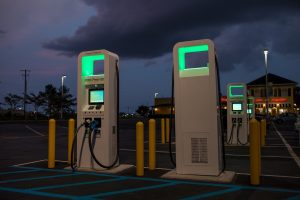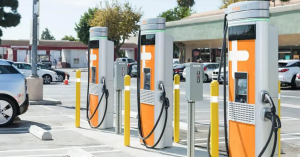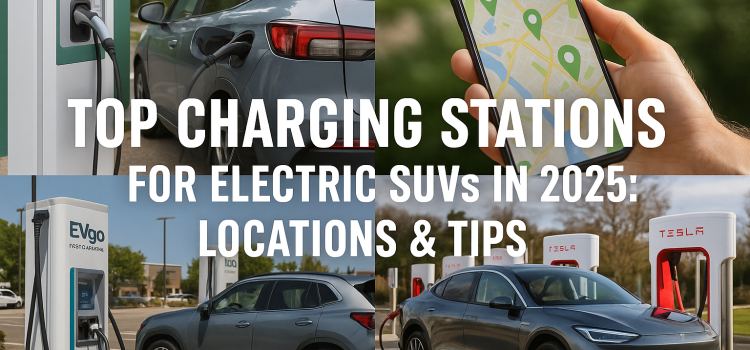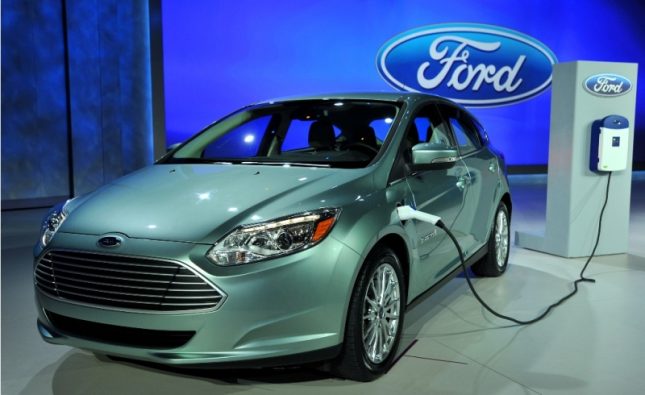
Introduction
Electric SUVs are more popular than ever. Drivers love their smooth ride, instant torque, and eco-friendly appeal. Yet a common worry remains: where to charge on long trips. In 2025, charging networks have grown and improved. Fast chargers now dot highways and city streets worldwide. Apps help you plan routes with real-time station data. In this guide, you will learn about the main types of charging stations, the best networks to know, prime charging locations, and smart tips for electric SUV drivers. By the end, you will feel confident powering up your SUV anywhere.
What Are Charging Stations?
Charging stations are places where you plug in an electric vehicle to restore its battery. They range from simple home wallboxes to high-power public chargers. A public station can sit in a parking lot, on a highway rest stop, or at a shopping mall. Some use one standard connector, while others offer multiple plugs.
Most stations provide AC or DC power. AC chargers rely on your vehicle’s onboard charger and are slower. DC fast chargers feed power directly into the battery at high voltage. These are the ones that add hundreds of miles of range in under an hour. Charging station apps map availability and status. This helps you avoid dead-end trips to busy stations.
Types of Charging Stations

Charging stations differ by power level and connector type. Understanding the main kinds helps you choose the right spot to plug in.
Level 1 (120V AC)
Level 1 chargers use a standard household outlet. They deliver about 2 to 5 miles of range per hour of charging. This is best for overnight charging at home. It is too slow for most public uses. Yet every electric SUV can plug into a Level 1 outlet in an emergency.
Level 2 (240V AC)
Level 2 chargers require special equipment and a 240-volt circuit. They add 15 to 45 miles of range per hour. You find these at homes, workplaces, and public stations. Charging an electric SUV from empty to full takes four to ten hours. This level is ideal for destination charging—overnight stays or long workdays.
DC Fast Charging
DC fast chargers, also called Level 3, supply direct current at high voltage. Power ranges from 50 kW to 350 kW in 2025. At the high end, you can add 200 miles of range in 15 minutes. Most public highway chargers now offer 150 kW as a minimum. This power level suits road trips and quick top-ups.
Connector Types
In 2025, most electric SUVs use CCS (Combined Charging System) connectors in North America and Europe. Some Asian markets prefer ChaoDHMe. Tesla Superchargers use a proprietary plug, though Tesla offers adapters for CCS. Be sure your vehicle and station use the same connection ahead of time.
Top Charging Networks in 2025

Several major networks lead the way in power, coverage, and ease of use. Each has its strengths, from ultra-fast charging to broad station footprints.
Tesla Supercharger Network
Tesla’s Supercharger network remains the most extensive for electric SUVs. With over 30,000 high-power stalls worldwide, it offers speeds up to 250 kW. Superchargers sit every 70 to 100 miles on major routes. Tesla owners enjoy seamless navigation and one-tap payments through their car’s screen.
Electrify America
Electrify America, a VW Group initiative, now has more than 2,500 fast-charging sites across the U.S. Stall power goes up to 350 kW in key locations. The network supports CCS and ChaoDHMe connectors. Membership plans cut costs per kWh and offer reservation via app to avoid waiting.
ChargePoint
ChargePoint runs the largest network of Level 2 chargers and a growing number of DC fast chargers. With 200,000 spots globally, it covers workplaces, hotels, and public lots. The app provides real-time station status, pricing, and driver reviews. ChargePoint cards grant access to partner sites across multiple networks.
Ionity (Europe)
Ionity leads in Europe with 400 high-power charging hubs along major motorways. Chargers deliver up to 350 kW with CCS plugs. Ionity stations sit about every 120 km across the EU. Drivers pay via app or RFID card. Many sites blend solar power and battery storage to minimize grid strain.
Blink Charging
Blink offers Level 2 and Level 3 stations in North America. It focuses on ease of installation at hotels, apartments, and public lots. Blink app users see pricing and can start sessions with one tap. The network continues to expand in secondary markets, filling rural gaps.
Table: Comparison of Leading EV Charging Networks
| Network | Stall Count | Max DC Power | Connector Types | Key Feature |
|---|---|---|---|---|
| Tesla Supercharger | 30,000+ | 250 kW | Proprietary, CCS* | Seamless in-car billing |
| Electrify America | 2,500+ sites | 350 kW | CCS, ChaoDHMe | Reservation option via app |
| ChargePoint | 200,000+ spots | 350 kW | CCS, ChaoDHMe | Broad Level 2 coverage |
| EVgo | 1,200+ locations | 350 kW | CCS | Grocery and retail partnerships |
| Ionity (Europe) | 400 hubs | 350 kW | CCS | EU motorway network |
| Blink Charging | 30,000+ spots | 150 kW | CCS, ChaoDHMe | Rural network expansion |
* Tesla offers a CCS adapter for newer models.
Best Locations for Charging Electric SUVs

Knowing where chargers stand helps you plan worry-free trips. Here are prime regions with top networks and routes in 2025.
North America Cross-Country Corridors
Highway I-90 from Boston to Seattle hosts back-to-back Electrify America and EVgo stations. Interstate I-95 along the East Coast features Tesla Superchargers every 80 miles. The West Coast’s Pacific Coast Highway has scenic chargers at state parks and wineries.
Canada’s Trans-Canada Highway sees emerging networks of Flo and Tesla Superchargers. In Mexico, the Baja Coast route now includes Electrify America and local partners, letting you mow down the desert with ease.
Europe Trans-Europe Routes
The “Express Highways” linking London, Paris, and Berlin use Ionity hubs every 100 km. Spain’s Madrid-Barcelona corridor adds fast chargers from Endesa X. Italy’s Autostrada del Sole features Enel X and Tesla Superchargers. In Scandinavia, the EV-friendly route from Oslo to Stockholm mixes NOBIL-connected chargers and Tesla sites.
Conclusion
Electric SUVs are winning hearts in 2025. Their smooth performance and zero tailpipe emissions match well with growing charging networks. From Tesla Superchargers to local ChargePoint stations, you can find power on cross-country routes or in city centers. Remember to plan your route, use your network memberships, and aim for optimal charge levels. As ultra-fast chargers and wireless lanes appear, charging will become faster and more seamless. By following these tips, you can enjoy worry-free EV travel and help shape a cleaner, greener future on the road.
Call-to-Action
Ready to hit the road in your electric SUV? Map your 2025 charging route today and discover new networks for your next adventure!










